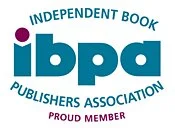The World as we know it is shrinking. Globally we are becoming a much smaller space and it’s no longer necessary to travel to far off distant places in order to experience (and learn) a second language. The United States has always been a great melting pot, but as Justin Peters discusses at Travel and Leisure, technology and innovation has placed the odds of language learning success more in our favor today than at any other time in history.
Technology and advancements in the travel industry have expanded our world. Learning a second or even a third language can be expedited. Opportunities for persons speaking more than one language abound as well. Job markets are often flush with invitations of dual language speakers. Speaking a second language is considered a marketable skill. It is not only desirable but is becoming downright necessary to learn a second language.
Census figures in the year 2000 showed an increase of 15 million people from the previous census that reported speaking a language other than English at home. Of those people, more than half claimed to speak English very well. What’s more interesting is, of the twenty top foreign languages spoken in the United States, the language that saw the greatest increase, the one I would have least expected, was the Russian language. Russian speakers almost tripled in number followed by speakers of Creole. So, you can see, speaking a second language is advantageous. Besides that, it’s fun!
To borrow a line from Dr. Seuss, “Oh the places you’ll go, the places you’ll see”. It is never too late to learn, experience new things and as would say, “stimulate your mind”. The art of linguistics and language is no exception and it is easier than ever to learn a fun, new language; and as Dual-Language.org suggests, learning a second language can change your life! Dual language books are an approach that can work for you.
As we age we tend to believe learning a new skill, especially a new language is impossible. After all, you can’t teach an old dog new tricks right? Wrong! For anyone interested in learning a second language, utilizing dual language books is a workable alternative. Have you ever met an immigrant who learned to understand and speak English by watching television? At first glance you might say that isn’t the best route, but take a look at what the American Speech Language Hearing Association has to say about the best way to teach and learn a second language. Now take a second to compare the television example with one who learns a second language with with dual language books. An immigrant that learns English through American television is gathering the gist of the subject matter through entertainment: no boring lessons, drawn out classes, repetitive practices-just pure entertainment. Readers of dual language books have a similar experience, leveraging entertainment and familiar stories.
A dual language book incorporates the foreign language the reader wishes to learn and the English translation of the story line. It is all right there in front of the learner, who is so busily entertained, that learning a foreign language is a painless process. Educators will find dual language books to be a fantastic resource for teaching students any foreign language. English speaking and non-English speaking students wishing to improve linguistic skills will view dual language books as a great tool.




Socialize With Us: